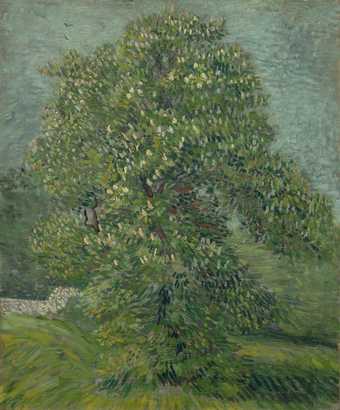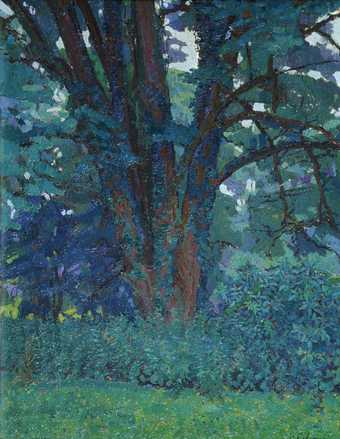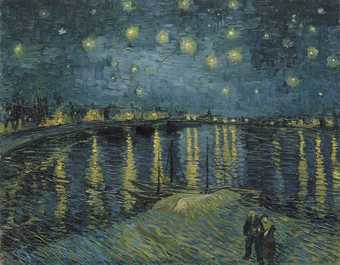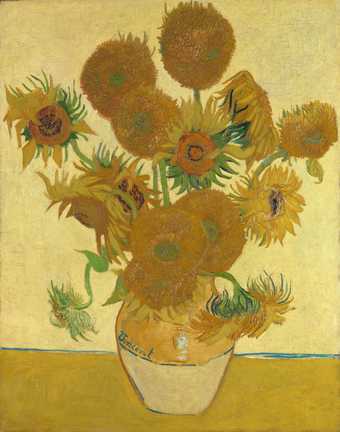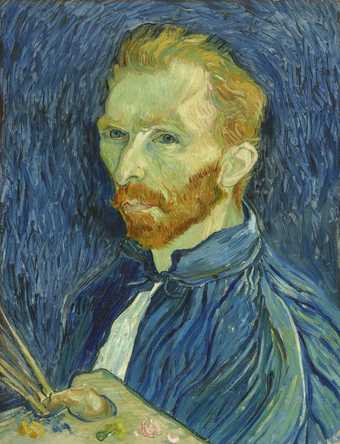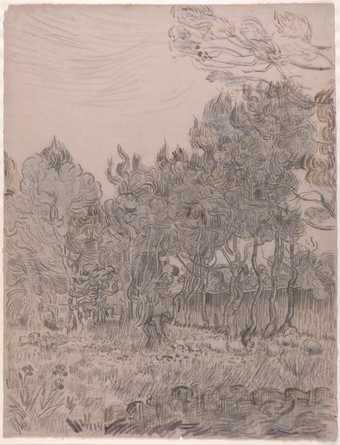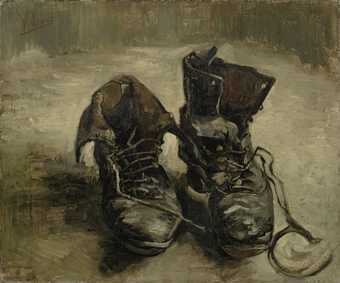
Vincent van Gogh Shoes 1886 Van Gogh Museum (Amsterdam, Netherlands)
Van Gogh came to Britain at the age of 20. He worked as an art dealer and was transferred by his employer to London for business. He spent three years in the city, walking its streets, crossing its bridges and gaining inspiration from the surroundings. His time in Britain was a life-changing experience, influencing the art he would begin making four years later. Here are seven things to know about Van Gogh's time in Britain.
1) He was a young immigrant
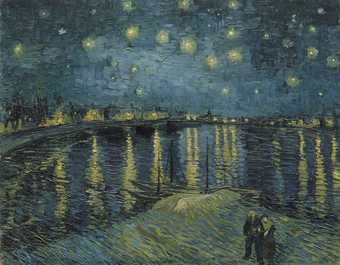
Vincent van Gogh Starry Night over the Rhone 1888 Musée d'Orsay (Paris, France)
Before the foundation of the European Union enabled free movement across its borders, Van Gogh travelled to Britain as an immigrant. The chance to live and work in a new country was an opportunity Van Gogh was grateful for. To the people of Victorian London, he was a foreigner. He was happy in London. Britain offered him prosperity. At the age of 20, he was earning more than his father.
He worked in Covent Garden as a dealer in art photography and prints. He lived in South London, first in Brixton and then in Oval. London was twenty times the size of any town that Van Gogh had known. He enjoyed walking its streets, taking his usual route over Westminster Bridge for a scenic commute to work. Later he would write to his brother, fondly remembering these walks over Westminster Bridge. Van Gogh thought Gustave Doré's The Houses of Parliament by Night captured the magic of London. In Starry Night Over the Rhone 1888 he would seek to replicate the spectacle of a city river at night.
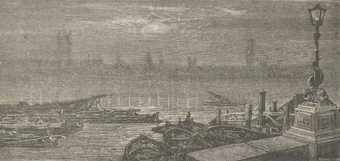
Gustave Doré The Houses of Parliament by Night 1872 Van Gogh Museum, Amsterdam, Netherlands
I crossed Westminster Bridge every morning and evening and know what it looks like early in the morning, and in the winter with snow and fog.
Vincent van Gogh
2) He was inspired by British reform
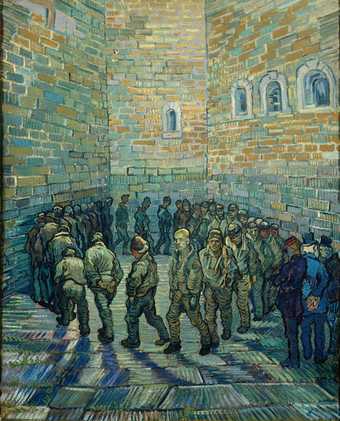
Vincent van Gogh Prisoners Exercising 1890 State Pushkin Museum of Fine Arts (Moscow, Russia)
At the time of Van Gogh’s arrival in London in 1873, social reform was beginning to find power in parliament. The ideals of the time were changing, with publications like J S Mill’s On Liberty circulating heavily in the public domain. For a young man working in London to survive, Van Gogh was invested in how Britain was changing and how that would impact him.
Having grown up in a middle-class home, Van Gogh was shocked by the poverty on the streets of London. He began questioning capitalism and vowed to live a meaningful life. When he did decide to become an artist, he wished only to create art ‘for the people’. Prisoners Exercising was based on a print of Newgate Prison in London. It shows the misery and entrapment of the prisoners, while their superiors, a prison guard and two upper-class men in top hats watch on. This image stayed with Van Gogh for many years, finally painting Prisoners Exercising in 1890. It is clear Van Gogh felt a kinship with the behaviour and social position of these prisoners. Van Gogh never profited from his paintings during his lifetime, living in poverty for the majority of his life.
3) He fell in love with Victorian culture
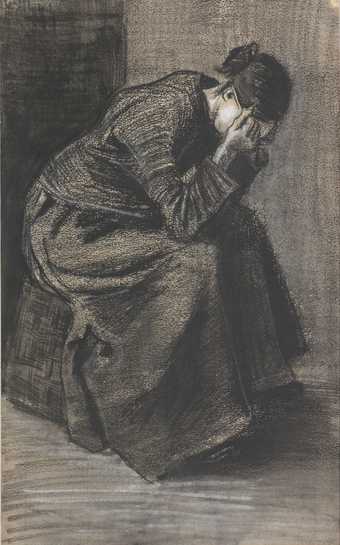
Vincent van Gogh Woman Sitting on a Basket with Head in Hands 1883 Kröller-Müller Museum (Otterlo, The Netherlands)
London presented Van Gogh with a stark new reality to his rural hometown. He was impressed by the city’s modernism, advanced technology and transport. London was a city lit by streetlights, a city powered by electricity and a city that relied on industrial power. It was impressive in all its accomplishments.
The traditions of Victorian England also inspired Van Gogh. When he first came to London, he purchased a top hat, a symbol of the successful Victorian middle-class. He enjoyed Christmas. Modern ideas of Christmas, full of presents, Christmas trees and Thanksgiving style dinners, all came into trend during the Victorian period. There was a novelty to it that appealed to Van Gogh. Similarly, English pastimes such as gardening and rowing on the Thames were a form of enjoyment for him. Van Gogh submerged himself in the culture of his new home.
4) He enjoyed English literature
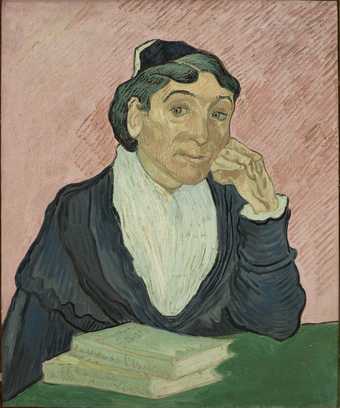
Vincent van Gogh, L'Arlésienne 1890. Museu de Arte de São Paulo Assis Chateaubriand – MASP (Sao Paulo, Brazil)
The idea of this Victorian Christmas was fuelled by Van Gogh’s love for Charles Dickens. He enjoyed re-reading Dickens’s Christmas Stories every year. They can even be seen in the foreground of L’Arlésienne.
English Literature was a great love of his. He continued to read Dickens until his death. In his letters, Van Gogh mentions over one hundred books by British authors. Writers like George Eliot, with her social realism novel Middlemarch, influenced Van Gogh’s understanding of social reform. The idea to create ‘art for the people’ was inspired by Eliot’s socialist prose.
His favourite though was John Bunyan’s The Pilgrim’s Progress. It is an allegory of a man who must travel on a path filled with many obstacles that test his faith in the Christian God. Van Gogh, as an immigrant, returned to the idea of life on the road, a figure that haunted his drawings and paintings for the entirety of his career.
5) Britain set Van Gogh on a religious career
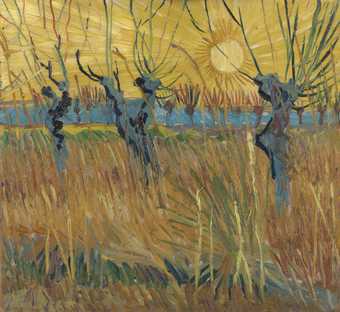
Vincent van Gogh Pollarded Willows 1888 Kröller-Müller Museum (Otterlo, The Netherlands)
The Pilgrim’s Progress centred heavily on a Christian message about devotion to God. During his time in London, Van Gogh became more and more religious. It was at this time that he decided he wished to pursue a career as a priest.
A year after he left London, he was volunteering as a pastor in Borinage, a mining village in Belgium. Britain’s rising socialism had influenced Van Gogh so much that he donated much of what he and the Church had to the villagers to alleviate their poverty. The Church authorities were not pleased and fired Van Gogh for harming their governance in the region.
6) Britain encouraged his love for art
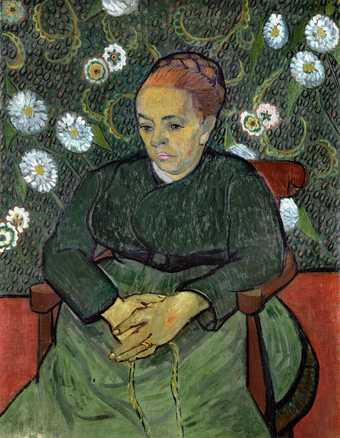
Vincent van Gogh Augustine Rouline (La berceuse) 1889 Stedelijk Museum (Amsterdam, The Netherlands)
It was after leaving the Church that Van Gogh joined the Académie Royale des Beaux-Arts in Brussels. Van Gogh had become interested in recording the surroundings he saw while he walked and his brother, Theo, encouraged him to train as an artist.
Art had been present throughout Van Gogh’s life and career as an art dealer. In London, he enjoyed visits to the Royal Academy to view favourites like John Constable and the Pre-Raphaelite painters. Later, Van Gogh would use English titles for some of his works, hoping that they would sell well in Britain.
In many of his letters to his brother Theo, Van Gogh speaks about his love for art and London's galleries. At this time, he lacked confidence in his own talent. From the way he spoke about the artists whose work was being exhibited in London, it is clear they inspired him immensely.
My dear Theo,
Thanks for your letter. I think I’ll be leaving here on Thursday, 25 or Saturday, 27 June, if nothing unforeseen happens. I’m longing so much to see everyone and Holland. I’m also looking forward to having a good talk with you about art, start thinking about any questions you might want to put to me. We have many beautiful things here, including a spirited painting by Jacquet, and a beautiful Boldini. There are beautiful things at the Royal Academy this year; among others Tissot has 3 paintings. I’ve been drawing again recently, but it was nothing special. I was glad to see in your letter that you visit the Haanebeeks.
Adieu, goodbye for now, give my regards to all my friends.
Ever,Your brother. Vincent.Vincent van Gogh to Theo van Gogh
London, 16 June 1874
7) He left a legacy
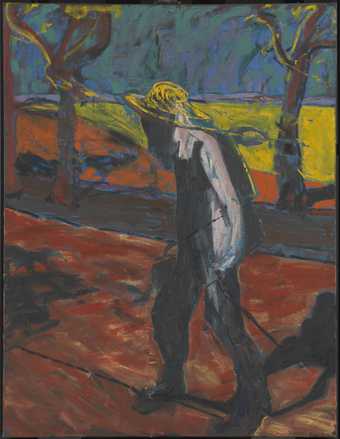
Francis Bacon
Study for ‘Portrait of Van Gogh IV’
(1957)
Tate
Many British artists have been influenced by Van Gogh and ensured he left a legacy in Britain. Harold Gilman was one of these champions. Gilman applied van Gogh’s use of bold colours and expressive brushwork to English motifs. A reproduction of Van Gogh’s portrait would hang in his studio that Gilman would salute. He would hang his paintings next to those of Van Gogh’s. The influence can be seen if you compare Gilman’s In Gloucestershire with Van Gogh’s Horse Chestnut Tree in Blossom.
Even later, Francis Bacon and his peers would position Van Gogh as a painter of hope after the destruction of the Second World War. Bacon would go on to paint a study of Van Gogh, based on one of Van Gogh's self-portraits. Van Gogh inspired a movement of British expressionist realism. Bacon’s artistic growth from earthy pictures to a more vivid, mature style, echo the works of Van Gogh.
Over a century after Van Gogh’s time in Britain, we are still aware of him and his work. He has become known in the public conscience as one of the most well-known artists to ever have lived. In our schools, he is one of the first painters taught to children. Van Gogh may have only have spent a matter of years in Britain, but he has stayed with us in the many decades after.

